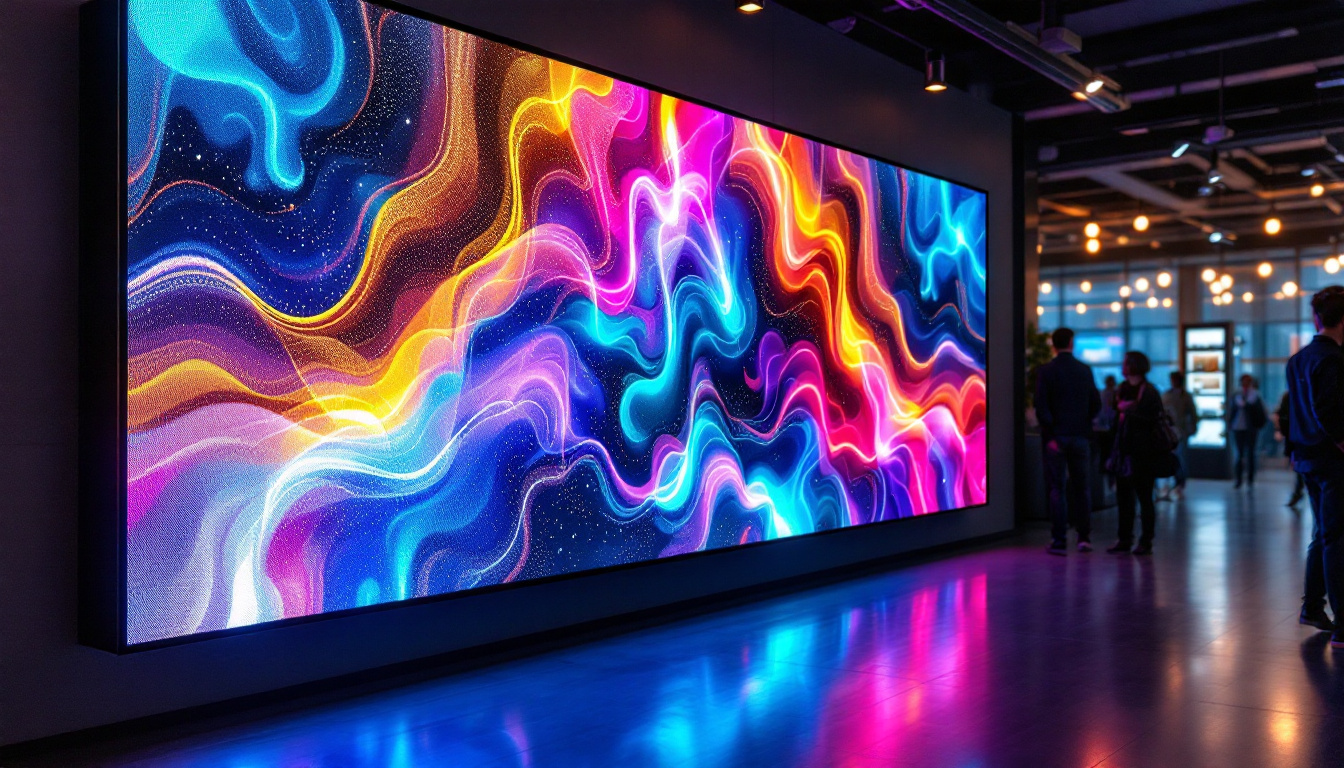In the realm of modern display technology, the term SMD is frequently encountered, especially when discussing LED displays. Understanding what SMD stands for and its implications in the world of LED technology is essential for anyone interested in electronics, advertising, or display solutions. This article will delve into the meaning of SMD, its advantages, and its applications in LED displays.
Understanding SMD: Surface-Mount Device
SMD stands for Surface-Mount Device, which refers to a method of mounting electronic components directly onto the surface of printed circuit boards (PCBs). Unlike traditional through-hole components that require holes drilled in the PCB, SMD components are soldered onto the surface, allowing for more compact and efficient designs.
The Evolution of SMD Technology
The evolution of SMD technology has revolutionized the electronics industry. Initially, electronic components were bulky and required significant space on circuit boards. With the advent of SMD, manufacturers began to produce smaller, lighter components that could be densely packed onto PCBs. This shift not only reduced the size of devices but also improved performance and reliability.
As technology progressed, SMD components became the standard in many applications, including consumer electronics, telecommunications, and automotive systems. The ability to mount components directly on the surface of a PCB paved the way for more sophisticated and compact designs, leading to the development of modern devices such as smartphones, tablets, and LED displays. Additionally, the rise of IoT (Internet of Things) devices has further propelled the demand for SMD technology, as these devices often require miniaturization to fit into everyday objects while maintaining functionality.
How SMD Works
The process of using SMD technology involves several steps. Initially, the PCB is designed with specific pads for the SMD components. These pads are coated with solder paste, which is then heated to create a bond between the component and the PCB. This method allows for automated assembly processes, significantly speeding up production times and reducing costs.
Furthermore, SMD components come in various shapes and sizes, allowing for flexibility in design. This versatility is particularly advantageous in LED displays, where different types of SMD LEDs can be used to achieve various brightness levels, colors, and pixel densities. The compact nature of SMD also facilitates the integration of multiple functionalities into a single device, such as combining sensors, processors, and communication modules within a single PCB layout. As a result, engineers can innovate and create devices that not only perform better but also consume less power, which is increasingly important in today’s energy-conscious market.
The Role of SMD in LED Displays
SMD technology plays a crucial role in the manufacturing of LED displays. These displays are widely used in advertising, entertainment, and information dissemination due to their vibrant colors and high visibility. Understanding how SMD influences LED display technology is key to appreciating their widespread use.
Advantages of SMD LEDs
SMD LEDs offer several advantages over traditional LED technologies. One of the most significant benefits is their compact size. SMD LEDs are smaller than conventional LEDs, allowing for higher pixel densities in displays. This results in sharper images and more detailed visuals, making them ideal for applications where clarity is paramount.
Additionally, SMD LEDs are known for their energy efficiency. They consume less power while providing greater brightness, making them an environmentally friendly option for display technology. This efficiency translates to lower operational costs, which is particularly appealing for businesses that rely on large-scale LED displays for advertising or information sharing. Furthermore, the longevity of SMD LEDs contributes to reduced maintenance costs, as they typically have a longer lifespan compared to traditional lighting technologies. This durability ensures that displays remain operational longer, minimizing downtime and enhancing the overall return on investment for users.
Applications of SMD LED Displays
SMD LED displays are versatile and can be found in various applications. One of the most common uses is in outdoor advertising. Billboards and large screens in public spaces utilize SMD technology to deliver eye-catching advertisements that can be seen from a distance. The ability to display dynamic content, such as videos and animations, enhances the effectiveness of these advertisements.
Moreover, SMD LED displays are increasingly used in indoor settings, such as shopping malls, airports, and sports arenas. Their high brightness and excellent color reproduction make them suitable for environments with varying lighting conditions. Additionally, they can be used for digital signage, providing real-time information to viewers. In the context of live events, SMD displays have revolutionized how audiences experience performances, allowing for immersive visual effects that complement the entertainment. This adaptability not only enhances spectator engagement but also opens up new avenues for creative expression in event production, making SMD LED displays an essential tool in the modern visual landscape.
Comparing SMD to Other LED Technologies
While SMD technology offers numerous benefits, it is essential to compare it with other LED technologies to understand its unique advantages and limitations. Two common alternatives are DIP (Dual In-line Package) and COB (Chip on Board) technologies.
DIP vs. SMD
DIP LEDs were among the first types of LEDs used in displays. They are larger and typically used in applications where space is not a constraint. However, DIP LEDs have a lower pixel density compared to SMD LEDs, resulting in less detailed images. Furthermore, DIP technology is less energy-efficient, making SMD a more favorable option for modern applications.
In contrast, SMD LEDs allow for more compact designs and higher resolutions, making them the preferred choice for high-definition displays. The ability to produce smaller components means that manufacturers can create displays with finer pixel pitches, enhancing image quality.
Additionally, SMD technology supports a wider range of color temperatures and brightness levels, which can be tailored to specific applications. This adaptability is particularly beneficial in environments where lighting conditions vary, such as retail spaces or outdoor venues. The lightweight nature of SMD components also facilitates easier installation and maintenance, further solidifying their position in the market.
COB Technology
COB technology is another alternative that has gained popularity in recent years. In this method, multiple LED chips are mounted directly onto a substrate, allowing for improved heat dissipation and higher brightness levels. While COB displays can offer excellent performance, they are generally more expensive to produce than SMD displays.
Moreover, SMD technology remains more versatile, allowing for greater design flexibility and customization. As a result, SMD LEDs continue to dominate the market for a wide range of applications, from small screens to massive outdoor displays.
Furthermore, the integration of SMD technology into smart lighting solutions has opened up new avenues for energy savings and automation. With the rise of IoT (Internet of Things), SMD LEDs can be easily integrated with smart systems, enabling features such as remote control, dimming, and color changing. This level of interactivity not only enhances user experience but also contributes to energy efficiency, making SMD technology a frontrunner in the evolution of lighting solutions.
The Future of SMD LED Displays
The future of SMD LED displays looks promising, with ongoing advancements in technology and design. As consumer demands for higher resolution and more vibrant displays continue to grow, manufacturers are investing in research and development to create even more efficient and effective SMD solutions.
Innovations in SMD Technology
Recent innovations in SMD technology include the development of microLEDs, which offer even smaller sizes and higher pixel densities. These microLEDs can potentially revolutionize the display industry by providing superior brightness and contrast while consuming minimal power. As this technology matures, it is likely to be integrated into SMD LED displays, further enhancing their capabilities.
Additionally, advancements in color accuracy and energy efficiency are expected to drive the evolution of SMD displays. Manufacturers are continually exploring new materials and designs to improve the performance of SMD LEDs, making them even more appealing for a wide range of applications. For instance, the introduction of quantum dot technology is enhancing color reproduction, allowing displays to achieve a wider color gamut and more lifelike images. This is particularly beneficial for industries such as gaming and film, where visual fidelity is paramount.
Environmental Considerations
As sustainability becomes a critical focus in the electronics industry, SMD LED technology is well-positioned to contribute positively. The energy efficiency of SMD LEDs not only reduces operational costs but also minimizes the environmental impact of display technology. Furthermore, ongoing research into recyclable materials and eco-friendly manufacturing processes is expected to enhance the sustainability of SMD displays. Manufacturers are increasingly adopting practices that reduce waste and carbon footprints, such as utilizing biodegradable components and optimizing supply chains for lower emissions.
Moreover, the longevity of SMD LED displays contributes to their eco-friendliness. With lifespans that often exceed traditional display technologies, SMD LEDs reduce the frequency of replacements, thereby decreasing electronic waste. This durability, combined with the potential for modular designs that allow for easy upgrades and repairs, positions SMD LED displays as a sustainable choice for consumers and businesses alike. As awareness of environmental issues grows, the demand for such sustainable technologies is likely to increase, further driving innovation in the SMD LED sector.
Conclusion
In summary, SMD stands for Surface-Mount Device, a technology that has significantly impacted the development of LED displays. By allowing for compact designs, energy efficiency, and high pixel densities, SMD technology has become the preferred choice for a wide range of applications, from outdoor advertising to indoor digital signage.
As the industry continues to evolve, SMD LED displays are likely to incorporate innovative technologies and sustainable practices, ensuring their relevance in an ever-changing technological landscape. Understanding SMD and its role in LED displays is essential for anyone looking to navigate the world of modern electronics and display solutions.
Explore Cutting-Edge LED Displays with LumenMatrix
Ready to elevate your visual experience with the latest in LED display technology? LumenMatrix is at the forefront of innovation, offering a diverse range of LED display solutions that cater to all your needs. From captivating Indoor LED Walls to dynamic Outdoor Displays, and from versatile Vehicle LED Displays to engaging LED Sports Displays, we have it all. Discover how our Custom LED Displays and All-in-One solutions can transform your brand’s visibility and audience engagement. Check out LumenMatrix LED Display Solutions today and join the revolution in visual communication.































